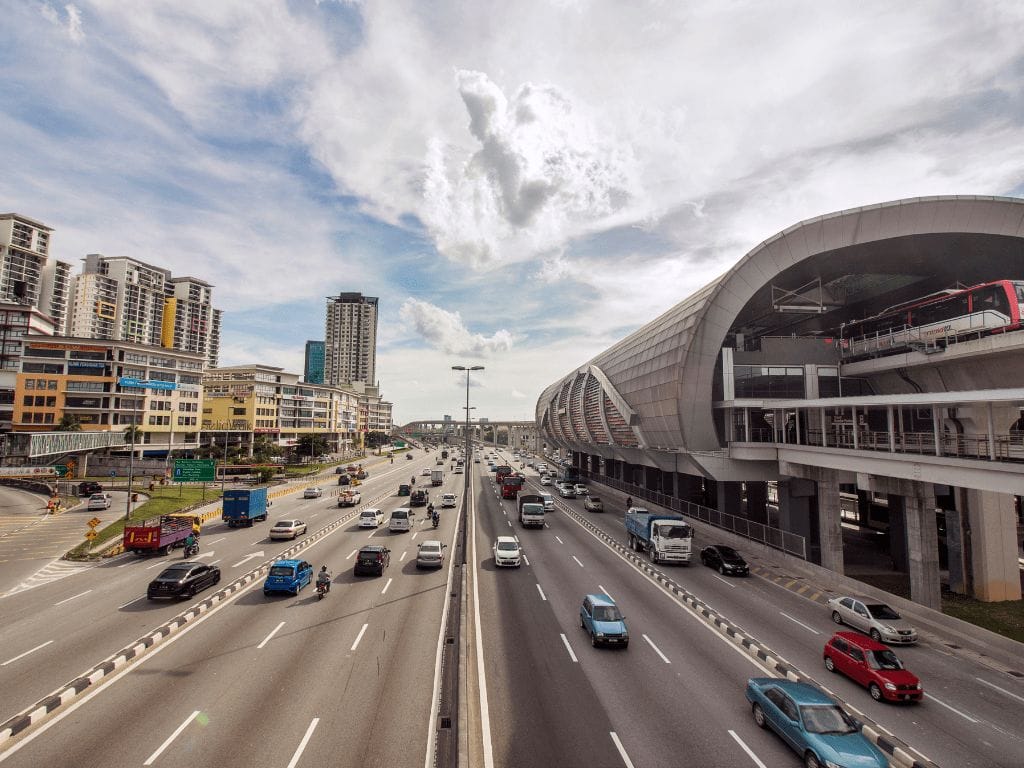Top 10 Most Beautiful MRT Stations in Singapore
The MRT system first began operations on 7 November 1987, with a five-station segment from Toa Payoh to Yio Chu Kang first opened to passengers. The novelty of a mass rapid transit system attracted thousands of passengers on the first day. To date, there are many new MRT stations, each with its own unique design and architecture, dazzling commuters and making their journeys a more pleasant one. Tropika Club aggregated rankings or “ranking of rankings” compared from the following sources to further ascertain the final rankings. This is further refined using the TripAdvisor rankings to decide between the position in case there is a tie. Read on to find out where are the Top 10 Most Beautiful MRT Stations in Singapore.
No Time to Read? Here’s a Snappy Summary of This Article
- Beauty in the Heartlands: Admiralty MRT Station features a 100-metre long mural depicting the history and culture of Woodlands.
- A Garden in the City: Bishan MRT Station has a green roof that blends with the nearby park and reduces heat absorption.
- Art and Heritage: Bras Basah MRT Station showcases artworks by local artists and students, as well as historical artefacts from the former Catholic High School.
- Futuristic Design: Buona Vista MRT Station resembles a spaceship with its curved metal roof and glass panels.
- Nature and Technology: Expo MRT Station mimics the shape of a palm tree with its steel columns and canopy.
- Cultural Diversity: Farrer Park MRT Station celebrates the ethnic diversity of Little India with colourful motifs and sculptures.
- Underwater Adventure: Stadium MRT Station transports passengers to an aquatic world with its wave-like roof and blue glass walls.
- A Tribute to Literature: Dhoby Ghaut MRT Station honours Singapore’s literary heritage with poems and quotes engraved on the walls.
- A Celebration of Life: Khatib MRT Station displays a series of murals depicting the life cycle of a butterfly and its symbolism.
- A Journey Through Time: Newton MRT Station traces the history of Newton Circus from colonial times to modern days with historical images and maps.
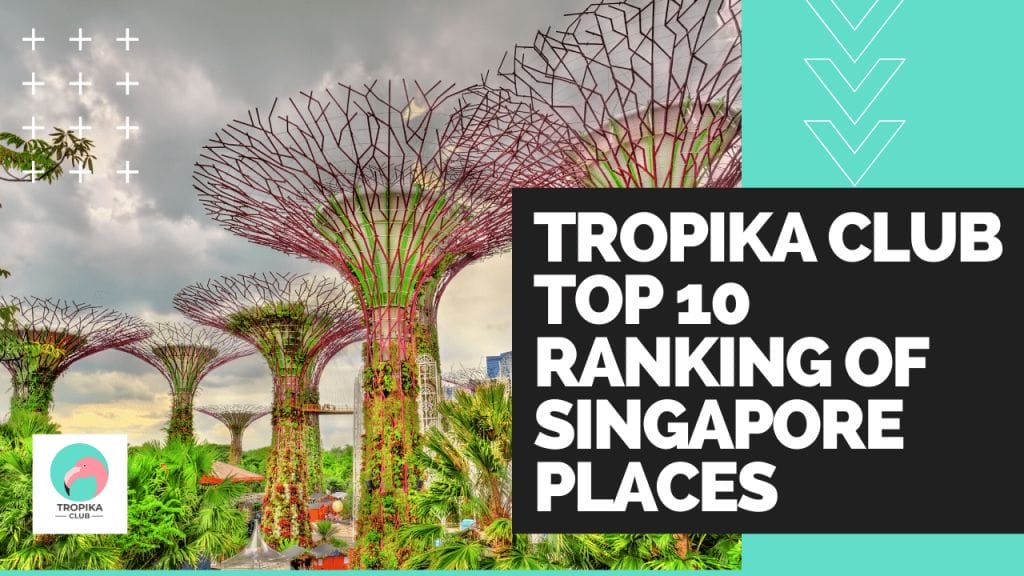

1. Redhill MRT Station
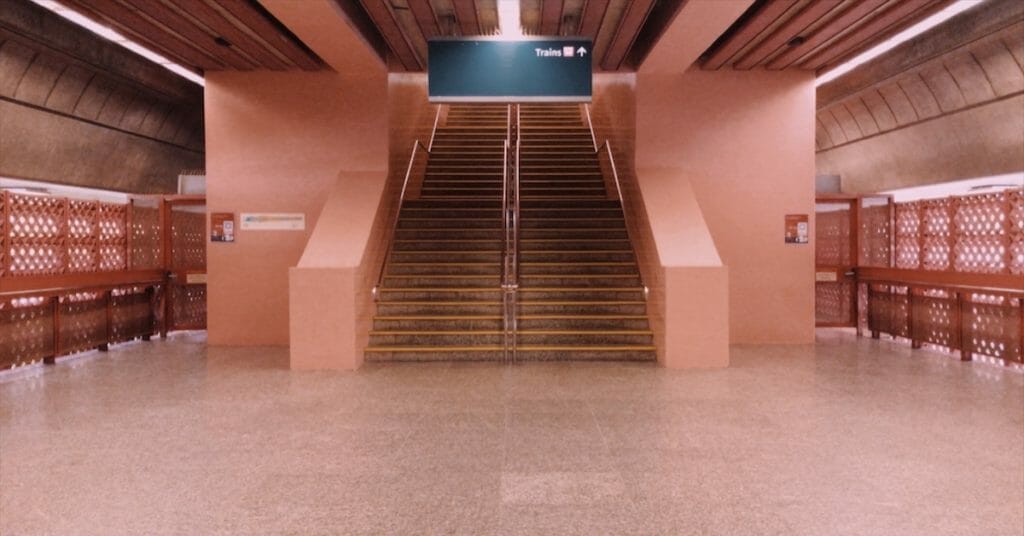
Introduction: Redhill MRT Station (EW18) is an above-ground station along the East West Line (EWL). It sits within the Redhill planning subzone, adjacent to the Alexandra Hill subzone, and is physically located along Tiong Bahru Road, at the junction with Jalan Tiong.
The station and surrounding areas are named Redhill after red-couloured lateritic soil found on the hill. It is a transport node for residents of Redhill and Alexandra, serving clusters of HDB housing developments, condominiums and schools around the Redhill and Alexandra area, along with businesses in the vicinity of Leng Kee Road.
Design: The Redhill MRT Station in Bukit Merah, Singapore, is the place of your Instagram dreams. The all-pink station is hands down the most photo-worthy transit system ever to exist and the one place we actually wouldn’t mind being stranded at. We can only imagine all the fashion blogger-like pictures we’d take while waiting. [Source]
2. Tan Kah Kee MRT Station
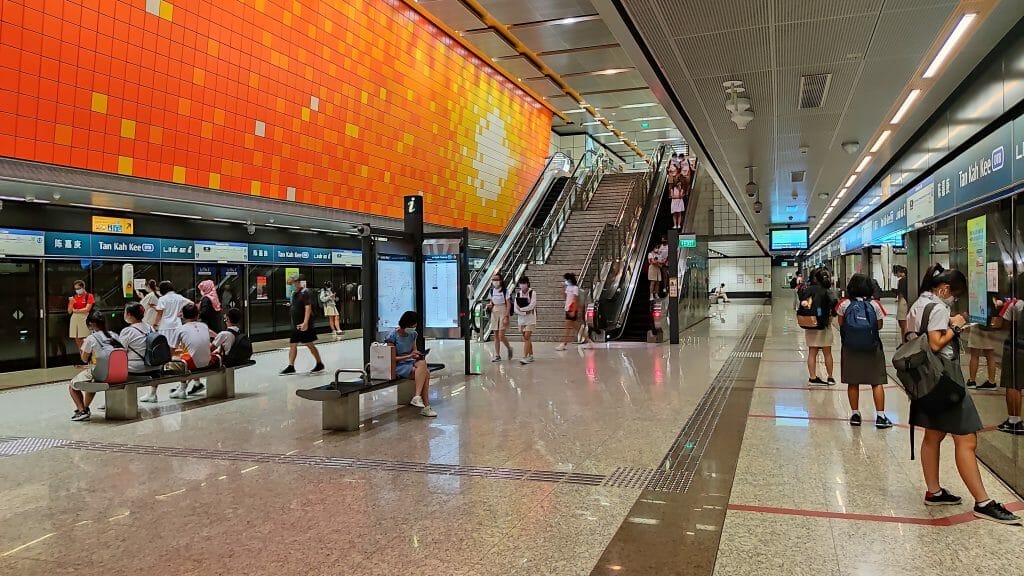
Introduction: Tan Kah Kee MRT Station (DT8) is an underground station along the Downtown Line (DTL) Stage 2, located at the boundaries of the Coronation Road and Hillcrest planning subzones. It is built underneath Bukit Timah Road, near the junction of Duchess Road, and serves part of the Bukit Timah corridor.
The station is located in the vicinity of upscale low-rise private homes and gated communities, and educational institutions in the ‘Bukit Timah belt’, such as Hwa Chong Institution, Nanyang Girls’ High School, Raffles Girls’ Primary School and National Junior College.
The station bears the name Tan Kah Kee, after the philanthropist and founder of Hwa Chong Institution. It was the first time that a person’s full name was used for to name a MRT station, and also first time that a MRT station name did not directly relate to the station’s geographical location.
Design: Taking its design cue from the open, park-like setting, this station’s overarching theme is ‘nature and flow’. The entrance pavilions have been conceived as a continuous enveloping canopy, with a distinctly modernist feel of clean geometric lines, and green geometric panels. [Source]
3. Dhoby Gaut MRT Station

Introduction: Dhoby Ghaut MRT Station (NS24/NE6/CC1) is an underground interchange station in the Central area, at the Eastern end of the Orchard Road shopping belt, connecting the North South Line (NSL), North East Line (NEL) and the Circle Line (CCL).
Located underneath Orchard Road and the The Atrium@Orchard shopping mall, the station brings rail connections to the diverse Dhoby Ghaut commercial area, with shopping centres, museums, educational institutions, residential apartments, the Istana, and places of worship in the vicinity. At ground level, a green space (Dhoby Ghaut Green) adds tropical greenery to the densely-built Orchard Road district.
The station and its surrounding area gets its name from Dhobi Ghat, which means “washerman’s place” in Hindi, in reference to people that used to wash their laundry from a clear stream in the area (now Stamford Canal) until the early 1900s.. Dhoby Ghaut station is also Singapore’s first three-line interchange station, and one of three terminus stations of the Circle Line.
Design: Dhoby Ghaut station was designed by Parsons Brinckerhoff (PB), a design consultant and construction company. Construction of the station was a challenging task for PB due to its complex structure. It is built above the main drainage of Orchard Road which divided the station site during excavation.
The five basement sections were built on a raft foundation to avoid the piled foundations above ground, so the drainage canal now runs through the station and is maintained from the office complex at The Atrium @ Orchard. The construction was completed in five years. Dhoby Ghaut station is constructed beneath The Atrium @ Orchard, a two-block commercial complex. A four-storey, glass-enclosed atrium forms a part of the station and the structure is more than 40m deep, comprising five underground levels, six platforms, three pairs of rail tunnels and a station box-shell for future light rail lines. [Source]
4. Commonwealth MRT Station
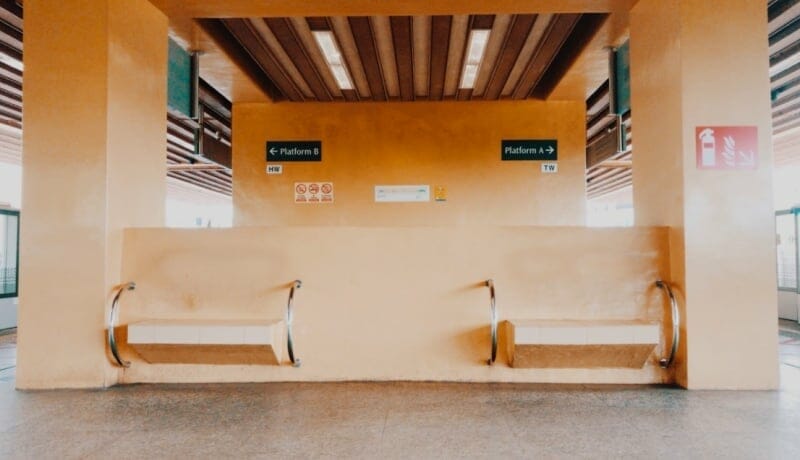
Introduction: Commonwealth MRT Station (EW20) is an above-ground station along the East West Line (EWL). It sits along the boundaries of the Commonwealth and Tanglin Halt planning subzones, and is physically located along Commonwealth Avenue, near the junction of Commonwealth Drive.
The residential estates and station bearing the same name were named after Commonwealth Avenue built around 1963, in turn named after the British Commonwealth of Nations. Commonwealth station is a transport node for residents in the vicinity of Commonwealth Avenue, serving adjacent schools, places of worship, housing developments and businesses.
Design: Commonwealth MRT Station i sawashed in shades of yellow and orange, giving it a sunny personality that is bound to cheer all commuters using the station. This elevated station has 4 exits serving the residents of Tanglin Halt and Commonwealth neighbourhoods.
5. Queenstown MRT Station
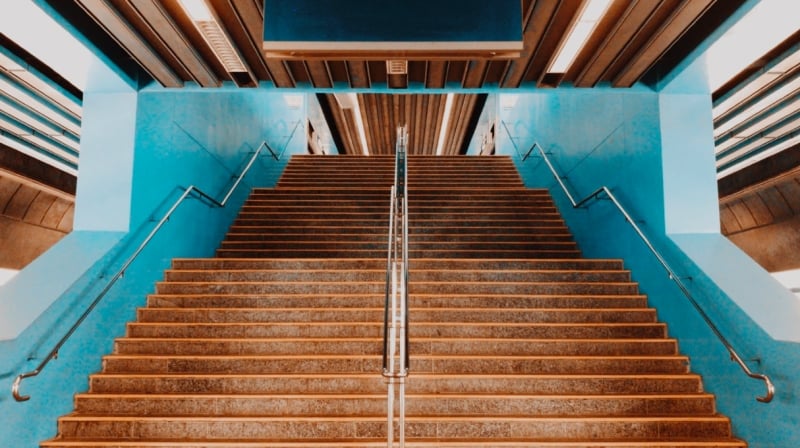
Introduction: Queenstown MRT Station (EW19) is an above-ground station along the East West Line (EWL). It sits along the boundaries of the Margaret Drive and Mei Chin planning subzones, and is physically located along Commonwealth Avenue, just next to the Commonwealth Towers development.
The residential estate and station were named after Queen Elizabeth II to mark her coronation in 1952. Queenstown station is a transport node for residents in the vicinity of Commonwealth Avenue, serving adjacent schools, places of worship and housing developments.
Design: Queenstown MRT station, with its pretty shades and hues of blue, attracts many Instagrammers for selfies.
6. Stadium MRT Station

Introduction: Stadium MRT Station (CC6) is an underground station along the Circle Line (CCL) Stage 1, located in the Kallang planning area. Situated within the Singapore Sports Hub, it serves many different sports infrastructure and lifestyle destinations such as Kallang Wave Mall, Leisure Park Kallang and Singapore Indoor Stadium. It is also the terminus of Marina Bay shuttle train services operating during the off-peak hours.
The station is aptly named after the adjacent National Stadium, which is the centrepiece of the Singapore Sports Hub and used for major events. It is also the terminating station for the Marina Bay shuttle, where Circle Line train services operate as a shuttle service to Marina Bay.
The station was designed by renowed local architectural firm WOHA, whose design was selected through the Marina Line Architectural Design Competition, an open design competition organised jointly by the Land Transport Authority of Singapore and the Singapore Institute of Architects. Conceived as a massive underground sculpture, the station contains a large indoor space from surface to platform level that gives the public a moment of spatial grandeur. A continuous central skylight creates a dramatic naturally-lit interior, and journeying into the station is like descending into a giant shimmering grotto that draws crowds to its interior.
Design: Stadium MRT Station’s design was inspired by European train stations of the nineteenth century, when train stations were grand, inspiring spaces that gave commuters an exciting architectural experience as part of their journey. Says the WOHA team, “These classic train stations are also important urban landmarks. We wanted Stadium MRT Station to achieve this aim, in addition to providing efficient commuter facilities.”
The winning design for the Stadium MRT Station had a “dramatic rebirth”. The design team had originally proposed lifting the existing road, Stadium Boulevard, and making it a bridge, thereby creating a public space that flowed under the road and connected all the surrounding buildings. As WOHA explains, “Once we started work, LTA did a traffic study on our bridge and came back with the conclusion that the road could be removed! This bridge was the central element of our design, and it was gone.” [Source]
7. Bras Basah MRT Station

Introduction: Bras Basah MRT Station (CC2) is an underground station along the Circle Line (CCL) Stage 1, located in the Central area. It is built underneath Bras Basah Road, bordering Waterloo Street and Queen Street, and serves the surrounding civic district within the Museum planning area. Nearby buildings include the Singapore Art Museum, SMU campus, NTUC Income Centre and Manulife Centre.
Bras Basah is Malay for “wet rice”. When rice carried as boat cargo got wet, they were laid out to dry at the banks of what became known as Sungei Bras Basah (now Stamford Canal).
The station is 35 metres underground, and houses the longest escalators throughout the Singapore rail network at 41.3 metres in length, which connects the station concourse (B1) to the transfer level (B4) and takes approximately one minute to travel. The station design by renowned local architectural firm WOHA was selected through the Marina Line Architectural Design Competition, organised jointly by the Land Transport Authority of Singapore and the Singapore Institute of Architects.
A prominent design feature of the station is the station roof, which appears to be a reflection pool from the surface, but doubles up as a skylight, allowing abundant natural light to reach the lower levels of the deep station. This design has won the station multiple international design awards.
Design: Bras Basah MRT Station was commissioned through the Marina Line Architectural Design Competition jointly organised by the Singapore Land Transport Authority and the Singapore Institute of Architects. The open, anonymous international competition, requiring no track record is acknowledged by the industry as one of the best run competitions held in Singapore to date. The Land Transport Authority continued their commitment to design throughout the project process. [Source]
8. Marina Bay Mrt Station

Introduction: Marina Bay MRT Station (NS27/CE2) is an underground interchange station along the North South Line (NSL) also serving as the terminus of the Circle Line (CCL) Extension. Located in the Downtown Core planning subzone, the station is built along alongside Bayfront Avenue.
Serving the Marina Bay area, named after the water body it surrounds, Marina Bay station serves limited nearby developments, but will be situated in the heart of the new Central Business District currently being built around it.
Design: To minimise the visual impact of the station on the surrounding park landscape, all ventilation openings within the immediate vicinity of the station entrance have been maintained below eye level. All emergency exits and BOH access have been arranged along a sunken pathway, so that only the lift, the entrance glazed enclosure and the lightweight ETFE canopy are visible at street level, allowing full views through the station entrance into the park.
The translucent ETFE canopy acts as a skylight, allowing natural light to filter through the large openings and penetrate right into the underground station hall and affording views from the hall below up to the sky.
Water features in the form of reflective pools have been introduced to provide a calming transition area between the station entrances and the park. At the same time the pools frame the open large voids and skylights as a safety barrier which help to maintain the station character as a light, welcoming structure. [Source]
9. Rochor MRT Station

Introduction: Rochor MRT Station (DT13) is an underground station along the Downtown Line (DTL) Stage 2, located at the boundaries of the Little India and Bencoolen planning subzones. It is built underneath Sungei Road and Rochor Canal Road, serving parts of the vibrant Bugis, Rochor and Little India district.
The station is located in the vicinity of shopping centres, office and retail mixed-use developments, preserved shophouses and LASALLE College of the Arts. Construction of the station involved significant engineering challenges to divert the Rochor Canal and building the station underneath the future North South Corridor and Rochor Canal.
Design: Rochor MRT station exemplifies how modern transit facilities can be functional, aesthetically pleasing and integrated within their context. Situated in an area where arts and technology converge in Singapore, the station showcases fluidity and dynamics in a design inspired by the fluid digital patterns of a circuit board. The integration of artwork into the architecture adds to a memorable commuting experience.
The organic, flowing form defines the entry to the station and the language for its interior. The ceiling pattern and lighting design engrave deep directional lines, providing an intuitive approach to wayfinding. Generous public spaces reduce congestion and enhance visual connections between the platform and concourse. [source]
10. Esplanade MRT Station

Introduction: Esplanade MRT Station (CC3) is an underground station along the Circle Line (CCL) Stage 1, located in the Central area. It is built underneath the junction of Bras Basah Road, Raffles Boulevard and Nicoll Highway, and serves the surrounding district within the Downtown Core planning area.
The station gets its name from the nearby iconic performing arts centre, Esplanade – Theatres on the Bay, while serving nearby landmarks such as Raffles City, Raffles Hotel, Civilian War Memorial, South Beach, Suntec Convention Centre and One Raffles Link. [Source]
Design: An artwork by the late Lim Mu Hue, titled A Piece of Ice-Clear Heart, is located on a large wall within the walkway within the station between Raffles City and Marina Square. This black and white artwork features shadow puppetry and other performances enjoyed by the early settlers of Singapore. Consisting of a set of seven pieces of wood block prints depicting various aspects of theatre, the artwork is a collage of early and later works by Lim Mu Hue who died soon after completing this commission
Conclusion
Singapore is known for its efficient and modern public transport system, especially the Mass Rapid Transit (MRT) network. But did you know that some of the MRT stations are also works of art and architecture? These are the top 10 most beautiful MRT stations in Singapore that you should check out the next time you take the train. These stations are not only functional and convenient, but also artistic and cultural, reflecting the diversity and creativity of Singapore. They also make your commute more fun and enjoyable, as you can admire the beauty and learn something new along the way. So, what are you waiting for? Hop on the MRT and explore these amazing stations today!
Tropika Club Magazine is your leading online magazine for the discerning male and female Singaporean. We cover various topics from beauty, wellness, fitness to travel and dining. We aim to provide unbiased and informative content for our readers. If you enjoyed this article, please share it with your friends and family. You can also check out our other articles on our website or follow us on Facebook, Instagram, or Telegram for the latest updates. Thank you for reading and have a great day!

Frequently Asked Questions (FAQ)
What are the benefits of having beautiful MRT stations in Singapore?
Having beautiful MRT stations in Singapore can enhance the commuting experience for passengers, as they can enjoy the aesthetic and cultural aspects of the stations. They can also learn more about the history and heritage of different areas in Singapore, as well as appreciate the creativity and innovation of the architects and artists who designed and decorated the stations. Furthermore, having beautiful MRT stations can also attract more tourists and visitors to Singapore, as they can explore the city through its public transport system.
How can I access the interactive MRT & LRT systems map?
You can access the interactive MRT & LRT systems map on the Land Transport Authority (LTA) website here. You can use this map to find information such as train schedules, routes, or nearby points of interest for any train stations. You can also zoom in and out, switch between different views, and search for specific stations or locations on the map.
How are new MRT stations named in Singapore?
New MRT stations in Singapore are named through a public consultation process conducted by the LTA. The LTA invites the public to submit their suggestions for station names online or through survey forms. The LTA then shortlists some of the suggestions for public polling, where the public can vote for their preferred names. The LTA then finalises the station names based on the public feedback and other considerations such as relevance, clarity, brevity, and uniqueness.
How many MRT lines are there in Singapore?
As of 2022, there are six MRT lines in Singapore: North-South Line, East-West Line, North East Line, Circle Line, Downtown Line, and Thomson-East Coast Line. There are also two LRT lines: Bukit Panjang LRT and Sengkang-Punggol LRT. More lines are being built to further expand rail coverage in Singapore.
Which MRT station pays tribute to Singapore’s literary heritage?
Dhoby Ghaut MRT Station pays tribute to Singapore’s literary heritage with poems and quotes engraved on the walls. These words were selected from over 200 submissions by local writers and poets, who expressed their thoughts on various themes such as identity, home, love, and dreams. The station also has a colourful mosaic wall that depicts scenes from Singapore’s history and culture.

Have a Place to Recommend?
Your contribution is valuable to us! Are there any outstanding businesses that you believe should be added to our list? If so, please send your recommendations to us at [email protected]. Tropika Club will review your suggestions and update the list accordingly. Thank you for your help in making our list of businesses as comprehensive and accurate as possible.
Meanwhile, Check out Tropika Club’s Ecosystem of Websites

Tropika Club Magazine – Tropika Club Magazine is a Singapore-based publication that features articles on a wide range of topics with a focus on local businesses and content for the region. The magazine emphasizes supporting local businesses through its #SupportLocal initiative, which includes coverage of everything from neighborhood hawker stalls to aesthetic clinics in town. In addition to highlighting local businesses, Tropika Club Magazine also covers a variety of local content, including beauty, lifestyle, places, eats, and what’s on in Singapore and the Asia Pacific region.
Tropika Club Deals – Tropika Club Deals is a leading online deals and voucher shopping site in Singapore, offering amazing discounts on beauty, wellness, and fitness products and services. It’s the perfect platform for customers who want to discover the best deals without having to commit to a specific appointment date and time. These deals are available at major beauty stores, facial salons, hair salons, and other brands in Singapore, with no minimum spend required. Choose from guaranteed discounted deals in the categories of hairstyling, hair removal, facial & aesthetics, body slimming, brows & lashes, nails & makeup, massage & spa or fitness & wellness. Tropika Club Deals is also ideal for customers who want to buy vouchers as gifts or to use for the future. So whether you’re looking to save money on your next haircut or want to treat yourself to a relaxing massage, Tropika Club Deals has got you covered with the best voucher and coupon deals in Singapore!



